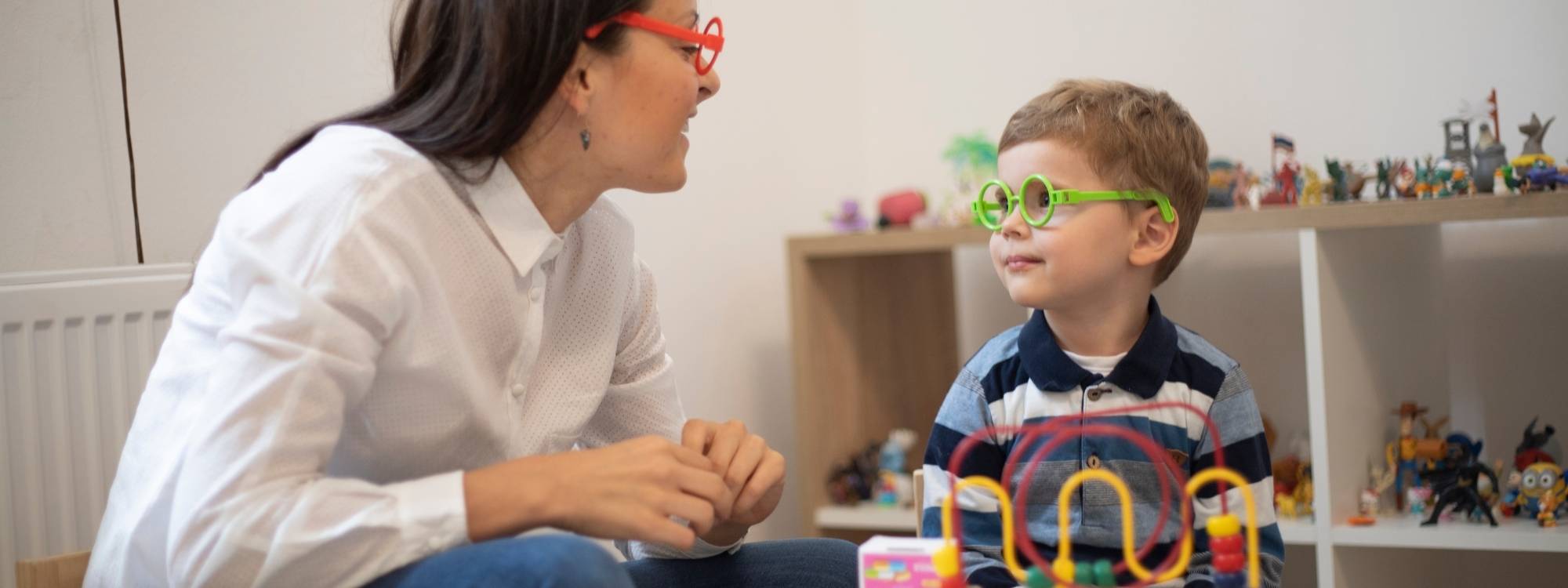Introduction to Autistic Children
Is working with autistic kids hard? The answer depends on the perspective and the tools available. Working with autistic children, including those with autism spectrum disorder, can present challenges due to their unique needs, such as difficulty with social interaction, communication, and managing repetitive behaviors. However, it is important to note that, with the right support and understanding, these challenges can be navigated effectively, making the experience rewarding for both the child and the educator.
Autistic children are often misunderstood due to their difficulties in engaging with others. They may not easily follow social cues or express their needs in ways that others expect, which can be frustrating for both the child and those working with them. However, by using positive reinforcement strategies and maintaining a structured routine, educators and caregivers can create environments where autistic children thrive, helping them build social skills, communication skills, and a sense of belonging.
As with all children, each autistic individual is unique. Patience, compassion, and a willingness to learn are essential in supporting their development. The key is understanding their specific needs and creating a personalized approach to teaching children and supporting them.
The Role of Professionals
Professionals such as special education teachers, occupational therapists, and school psychologists are crucial to the success of autistic kids. These professionals work closely with families, caregivers, and educators to develop Individualized Education Plans (IEPs), ensuring that every child receives the specific support they need.
Key Roles of Professionals:
- Special Education Teachers: Educators working with autistic kids are often at the forefront of providing direct support to autistic students. They tailor teaching methods and classroom environments to reduce anxiety and improve learning outcomes. By using visual aids, structured routines, and clear verbal instructions, they create a more inclusive classroom.
- Occupational Therapists: Occupational therapists focus on helping autistic children develop fine motor skills, sensory regulation, and daily living skills. They may use sensory integration therapy to help children manage sensory overload and promote self-regulation.
- School Psychologists: These professionals play an important role in identifying challenges and providing mental health support. They help in developing strategies to manage challenging behaviors and emotional difficulties, such as anxiety and stress.
Together, these professionals create a network of support that allows autistic kids to achieve success in both academic and social settings.
Effective Teaching Methods
Effective teaching methods for autistic children require flexibility, creativity, and a deep understanding of how they process information. Autistic children often respond well to structured environments and clear expectations. By incorporating visual aids, breaking down complex tasks into smaller steps, and offering positive reinforcement, teachers can help these children build skills and reduce anxiety.
Strategies for Teaching Autistic Children:
- Use of Visual Aids: Visual tools such as pictures, charts, and signs help autistic children follow instructions and make sense of their environment. Visual cues are especially helpful for children who struggle with verbal communication.
- Structured Routines: Establishing a clear and predictable routine in the classroom can help reduce stress and hyperactivity. Autistic children often thrive when they know what to expect next, as this provides them with a sense of security.
- Positive Reinforcement: Reinforcing positive behaviors helps children feel validated and motivated. Using reward systems or verbal praise can encourage them to continue working on new skills.
- Breaking Down Tasks: Complex tasks can be overwhelming for autistic children. Breaking tasks into smaller, more manageable steps helps them focus and achieve goals at their own pace.
By incorporating these methods into everyday practice, teachers and caregivers can foster a learning environment that reduces frustration and maximizes success.
Social Interaction and Inclusion
Social interaction and inclusion are vital for the emotional and cognitive development of autistic children. When working with autistic kids, it’s important to recognize that many have difficulty reading social cues, understanding nonverbal communication, and engaging in peer relationships. This often leads to feelings of isolation or frustration.
Creating opportunities for social interaction is key to building social skills. Educators can facilitate these interactions by encouraging group activities, cooperative learning, and structured play that includes guidance on social behavior.
Promoting Inclusion:
- Peer Interaction: Teachers can set up social skills training groups where autistic children can practice appropriate social behaviors in a safe environment. These groups can help children learn how to make friends and navigate social dynamics.
- Understanding and Empathy: Encouraging neurotypical children to understand autism and its challenges can foster more inclusive attitudes. This can lead to better acceptance and more natural social interactions.
- Creating a Supportive Environment: Creating an inclusive classroom environment where differences are embraced can make autistic children feel safer and more comfortable in their interactions. Educators can foster this by setting a tone of empathy, respect, and acceptance.
By facilitating social interactions and ensuring inclusion, teachers help autistic children develop critical interpersonal skills and form meaningful connections with their peers.
Navigating Challenges and Opportunities
Working with autistic kids is undoubtedly challenging, but it also offers many opportunities for growth, learning, and personal development. Understanding the symptoms and difficulties autistic children face, such as sensory sensitivities, communication difficulties, and difficulty adapting to changes, is essential for creating effective strategies that address these challenges.
However, it is equally important to recognize the unique strengths that many children with autism possess. Some children show remarkable abilities in math, art, or memorization. By focusing on these strengths, teachers can help students develop a sense of pride and confidence in their abilities.
Challenges and Opportunities:
- Sensory Sensitivities: Autistic children often experience heightened sensitivity to light, sound, or texture, which can make classroom environments overwhelming. By reducing sensory overload, such as using fluorescent lights or minimizing noise, teachers can create a more conducive learning space.
- Adapting to Change: Changes in routine or unexpected events can cause anxiety. Implementing a visual schedule or offering advance notice about upcoming transitions can help mitigate these challenges.
- Building on Strengths: Recognizing and nurturing the unique strengths of autistic children can make learning more enjoyable and fulfilling. Focusing on interests such as intense hobbies or specific talents can also motivate academic success.
Ultimately, by acknowledging both the challenges and opportunities and encouraging good behavior, teachers can make a meaningful difference in the lives of autistic children, helping them achieve success in school and beyond.
Conclusion
In conclusion, working with autistic kids can be challenging, but it is also incredibly rewarding. With the right strategies, support, and understanding, teachers can create a classroom environment where autistic children feel valued, understood, and capable of success. By using visual aids, structured routines, and positive reinforcement, educators can effectively address the challenges of working with autistic children and help them achieve their fullest potential.
Creating an inclusive environment that fosters social interaction and self-acceptance is key to supporting autistic children in their growth and development. By recognizing their unique needs and abilities, we can make the world a more inclusive place for everyone.
Feeling overwhelmed by the challenges of working with autistic children? At Champions ABA, we specialize in providing individualized support and effective teaching strategies tailored to each child’s unique needs. Our team of certified professionals is here to help you create a positive and supportive environment. Call us today or visit our website to learn how we can help you make a lasting impact in a child’s life.
FAQs
Is it hard to take care of a child with autism?
Taking care of a child with autism can be challenging, especially when managing behaviors such as communication difficulties, sensory sensitivities, and rigid routines. However, with the right strategies and support, caregivers can create a positive environment where the child thrives.
What to expect when working with autistic children?
Working with autistic children involves using tailored teaching strategies, creating structured routines, and providing consistent support. Expect to face some challenges, such as managing behavioral difficulties or supporting social interaction, but also experience the reward of watching the child grow and develop new skills.
Is working with autistic children difficult?
Yes, working with autistic children can be difficult due to their unique needs, including difficulty with communication and interpreting nonverbal cues social interaction. However, the right strategies, including positive reinforcement and visual aids, can make the experience more manageable and rewarding.
How to interact with a child with autism?
Interacting with a child with autism requires patience and understanding. Use clear verbal instructions, avoid figurative language visual supports, and provide consistent positive reinforcement. It’s important to observe the child’s responses and adjust your approach based on their needs, creating a supportive and accepting environment.



